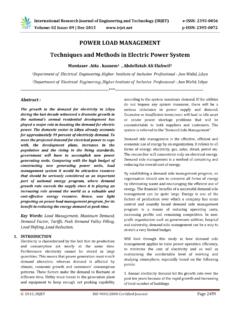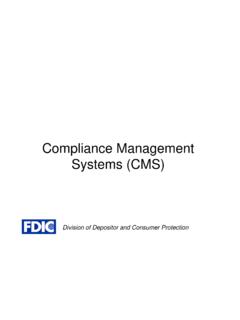Transcription of What Is Integrated Pest Management?
1 National Center for Environmental HealthDivision of Emergency and Environmental Health ServicesCS216471_TWhat Is Integrated Pest management ? Integrated pest management (IPM) is a science-based, common-sense approach for reducing populations of diseasevectors and public health pests. IPM uses a variety of pest management techniques that focus on pest prevention, pest reduction, and the elimination of conditions that lead to pest infestations. IPM simply means (1) don t attract pests, (2) keep them out, and (3) get rid of them, if you are sure you have them, with the safest, most effective methods. Community and resident education are vital to successful IPM programs. For IPM to succeed, environmental health specialists must take into account the behavior and ecology of the target pest, the environment in which it is active, changes that occur in the environment, and the activities of people who share the environment. An IPM approach works best when used with techniques that actively involve communities and residents in addressing issues that may contribute to pest infestations, such as home maintenance, sanitation, and IPM may include the use of pesticides, the primary components of IPM clearly separate it from typical pest control practices that rely exclusively on trapping and poisoning.
2 Those five components are Inspection/monitoring: routine examination of indoor and outdoor areas to identify if pests are present or if conditions exist that are conducive to pest infestations. A major inspection is done when starting an IPM program; regular inspections continue as part of a long-term commitment to IPM. Identification: If inspections reveal the presence of rodents or insects, determination of the type (species) of pest is critical for establishing effective control methods. For example, rodent control methods would be different for roof rats versus Norway of threshold levels: Elimination of all pests may not be practical in many situations. Thresholds should be established by which enhanced control methods are used when pest populations reach a predetermined level based on potential health impacts or damage to property or the environment.(Continued on back)FoodIPM:Deny pestsaccess toWaterHarborage Implementation of two or more control measures: The foundation of IPM is managing the environment to eliminatepest access to food, water, and shelter.
3 Using control techniques that focus on eliminating at least two of these essentials that pests need to survive will result in substantial reductions in pest and evaluation: regular followup to determine whether treatments are successful and what should be done next. Evaluation is one of the most critical components of an IPM is a comprehensive, systems-based approach to pest management with the goal of providing the safest, most effective, most economical, and sustained remedy to pest infestations. IPM reduces the risk from pests while also reducing the risk from the overuse or inappropriate use of hazardous chemical pest-control more informationabout IPM, E-mail: Web: 2010













